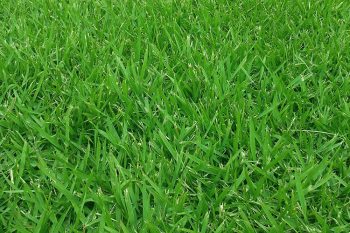 What is the difference between keeping your lawn healthy in the Spring and Autumn, versus caring for it in the heat of the Summer? What considerations do you need to keep in mind with your lawn care regimen?
What is the difference between keeping your lawn healthy in the Spring and Autumn, versus caring for it in the heat of the Summer? What considerations do you need to keep in mind with your lawn care regimen?
We’ve got a few for you to consider, and we’ve got solutions for how to adjust your routine.
With summer fertilization, there are three things you want to account for:
- Fertilization techniques and types of grass
- Watering habits and climate
- Mowing and grass-cycling
If you’re in a region where the temperature regularly soars above 90* in the summer- which is true here in North Texas- you want to be extra careful with the chemicals you use, in order to avoid burning your lawn.
But on the other hand, extreme heat can also be taxing on your lawn, making it more of a challenge for your grass to continue growing healthily. So how do you make a compromise between these two factors?
Click here for more expert info on lawn fertilization!
Let’s take a look at the top 3 things to consider:
Fertilization Techniques
If your lawn truly needs a fertilizer application, despite the heat, just make sure you’re not overdoing it. Don’t apply fertilizer in the heat of the day, and find out what the minimum requirements are for your specific breed of ground cover.
You may wonder what the difference is between synthetic and organic fertilizers, when it comes to efficacy. The truth is, synthetic fertilizers can be absorbed a lot more quickly, but organic fertilizer hold far less of a risk in burning your lawn. Take these issues into consideration with regards to your lawn care schedule and weather patterns.
Watering Schedule
Most North Texas grasses only need about 1-1.5 inches of water per week. Once again, do not do this in the heat of the day. You’ll simply risk evaporation. Early morning irrigation is best because it’s cool outside, and less likely to promote fungal growth than watering in the evening.
If you’ve just applied fertilizer, you want to water your lawn very soon afterward. This helps the nutrients soak into the soil, allowing optimal absorption by the grass’s root system. During bouts of heavy rain, be sure you’re checking your rain gauge so you know when it’s a good idea to skip out on watering your lawn.
Mowing and Grass-cycling
In the summertime, it really is a healthy practice to let your grass blades grow a bit longer- even up to 3 inches for some breeds! This creates a denser “canopy” that protects the topsoil from dehydration, thus locking in important moisture and fertilizer-based nutrients.
Set your mower such that it only cuts about 1/2 inch at a time off the grass, and make sure you leave behind the cut blades. This provides natural nourishment to your lawn as the blades break down and enrich the topsoil. Additionally, a denser ground cover helps naturally prevent the spread of weeds.
Need a good mower for a small yard? Check out these great recommendations from our friends at Instruments Reviewer.
A Quick Review
- Fertilize sparingly, and never in the hottest part of the day. Check to see what your ground cover needs, and use the minimal amount to avoid burning your lawn.
- Water to about 1 inch per week, preferably in the morning. Be sure you water your lawn directly after fertilizing.
- Let your grass grow a bit taller in the summer to protect the topsoil and discourage weeds. Leave the clippings behind rather than bagging them, as an extra source of nutrients for your lawn.
Keeping your lawn happy, healthy, and fertilized in the summer is a simple task as long as you know the basic do’s and don’ts. Be sure you reach out to a professional if you’ve got any questions.
And, as always, let us know if you’d rather us do all the work for you so you can simply enjoy a luscious lawn all summer long!
